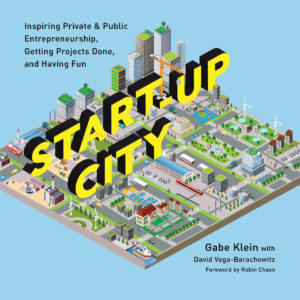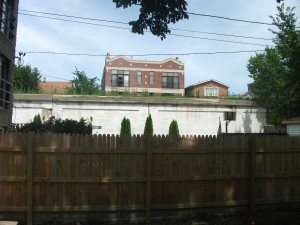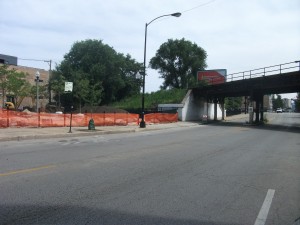 We often hear from conservatives that the public sector is inherently inefficient, lacking the competitive pressures that drive innovation. A great deal of the evidence seems anecdotal, although it’s not hard to come by. The work of most public agencies is at least somewhat more visible than that of most corporations. People build long memories, for instance, of long lines for driver’s license renewals. Today, however, most of us renew online unless there is some reason we need to retake the test or replace a lost license quickly. How often do we remember the agencies that have created more modern customer service operations? I read in the Chicago Tribune’s endorsement today of Cook County treasurer Maria Pappas for re-election that, in the past 20 years, she had reduced her staff from 250 to 88.5, while also digitizing more than 4.7 million pages of old records. Was anyone noticing?
We often hear from conservatives that the public sector is inherently inefficient, lacking the competitive pressures that drive innovation. A great deal of the evidence seems anecdotal, although it’s not hard to come by. The work of most public agencies is at least somewhat more visible than that of most corporations. People build long memories, for instance, of long lines for driver’s license renewals. Today, however, most of us renew online unless there is some reason we need to retake the test or replace a lost license quickly. How often do we remember the agencies that have created more modern customer service operations? I read in the Chicago Tribune’s endorsement today of Cook County treasurer Maria Pappas for re-election that, in the past 20 years, she had reduced her staff from 250 to 88.5, while also digitizing more than 4.7 million pages of old records. Was anyone noticing?
Count me a skeptic on the broad theory of greater efficiency in the private sector. I’ve long been more inclined to assess efficiency and innovation on a case-by-case basis. I don’t think it is at all impossible to innovate and streamline public-sector operations, nor do I think all businesses operate efficiently. In due course, obviously, the latter may go out of business, but there are also ways for voters to hold public agencies accountable—if they are so inclined, which sometimes they are not. People are sometimes more than willing to re-elect dinosaurs for a variety of reasons, just as they sometimes continue to patronize sluggish businesses. Human decision making in both the political and economic realms can be rather fallible, a fact that the field of economics is finally coming to terms with (witness the work of Amos Tversky and Daniel Kahneman, the subjects of the Michael Lewis book The Undoing Project, or of Richard Thaler).
It is thus heartening to see someone like Gabe Klein produce a short, snappy volume, Start-up City, that provides both case studies and principles for public-sector innovations in our cities, with an eye to building the cities of tomorrow that are in fact competitive with their peers in fostering both better service to their constituents and better prospects for environmentally and socially beneficial economic development.
Klein’s book discusses the innovations he introduced first in Washington, D.C., and later in Chicago, in both cases managing the city’s transportation department. When the mayor of Washington appointed him to the first post, he pulled Klein out of the private sector, where he had been involved with a bicycle company, food trucks, and Zipcar. Those enterprises exposed him to competitive entrepreneurial environments where innovation flourished, but also to obstacles that regulators can pose to innovation. Klein flourished in the public sector as well because he firmly believed that innovation in public agencies, even those that had been somewhat stodgy and resistant to change in the past, was eminently possible. He set out to prove it through a combination of public-private partnerships, new thinking about agency missions, and a determination to find a way to make things happen. He distills the lessons from these experiences in a series of short eight chapters that are called, well, lessons.
Those lessons are not bashful or pain-free. For example, Lesson #1: Don’t Be Afraid to Screw Up and Learn. Klein’s underlying point is simple: If you spend your time indulging a fear of making mistakes—which, sometimes, in the public sector, can be very visible—you will accomplish little or nothing. This preoccupation may ensure short-term survival, but in the end, it is self-defeating (not to mention boring). It helps, of course, to have a mayor or other public chief executive who has your back. (Get that assurance before you accept the post.)
I won’t belabor the points here because I’d rather encourage you to read this book, which is not a long read but is definitely an inspiring one. But I will note that, in both cities, despite some entrenched opposition, Klein managed to instill numerous and prominent bicycle lanes on city streets, as well as engineering the completion of the 606 Trail in Chicago, a project about which I have written in the past, and the Riverwalk in downtown Chicago. Along the way, he discusses the marketing and branding of public projects, creative approaches to financing those projects, and effective means of engaging the private sector in meaningful partnerships. You will also learn from Klein’s smooth prose that he is an effective salesman, communicator, and presenter, making it small wonder that Mayors Adrian Fenty in Washington and Rahm Emanuel in Chicago would seek him out to serve in their administrations.
But I also want to make clear that Klein is not sui generis and does not claim to be. One need only look at the innovations of Janette Sadik-Khan in New York City under Mayor Michael Bloomberg, creating pedestrian walkways in the middle of Manhattan while improving traffic flow, to know that such innovation can abound in the public sector. (Sadik-Khan has her own book, Street Fight, that details her experiences in city government.) All that is required is the political will to turn the entrepreneurial spirit loose in city government. The only real obstacle is a lack of commitment and imagination.
Jim Schwab




